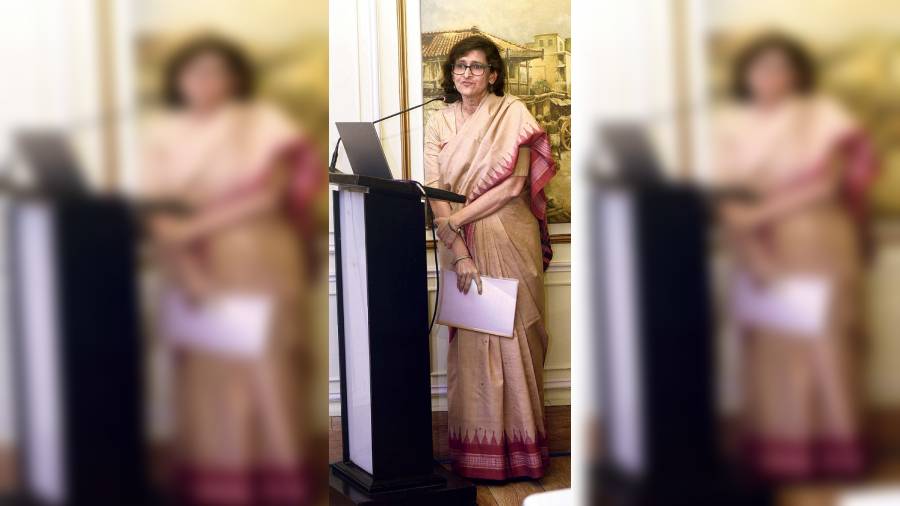To commemorate the 150th birth anniversary of artist and literateur Abanindranath Tagore, the library sub-committee at The Bengal Club held a talk titled ‘Abanindranath Tagore at 150 — Rediscovering the Artist for Our Times’. Art historian Tapati Guha Thakurta was the key speaker at the event and was joined on stage by Monojit Dasgupta, Chaitali Maitra, Raka Sen and Amita Chatterjee, participants on behalf of the library sub-committee.
The conversation inevitably revolved around Abanindranath Tagore’s massive influence on Indian art and literature. The talk started off with Dasgupta welcoming everyone to the committee’s first in-person event since the pandemic and an introduction to Bengal’s beloved Aban Thakur himself. “For Abanindranath, the house that he grew up in Jorasankho, collected two cultural worlds, the white town where the British lived and black town for the natives,” Dasgupta said. Abanindranath Tagore’s talent was definitely not limited to art. It spilled over generously to the world of literature, even exploring different genres like Indian history, anthology and more.
The library sub-committee members also talked about Abanindranath’s popular literary works like Kshirer Putul, Rajkhahini and more, speaking about how his stories too, had a pictorial quality to them.
To help the intimate audience “enter and savour the world of Aban Thakur’s art”, Guha Thakurta was soon called upon to speak. With an informative and entertaining slideshow accompanying her talk, Guha Thakurta provided beautiful insights to the world of Abanindranath Tagore and his many creations. She started her session by mentioning how much has been talked about Aban Thakur and his art, but there have been confines to it. Nevertheless, she also mentioned such texts that have contributed in bringing Abanindranath Tagore “from the narrow nationalist confines of Indian-style painting, in which his image remained trapped and, in a way, still remains trapped”, to repositioning him within the “history of India’s artistic modernisms of the early 20th century.”
However, it was stated that the paintings of Abanindranath Tagore still remain largely outside of the public eye, limited to scholarly circles, despite them being housed right in the city at the Indian Museum, which had the earliest collection of Abanindranath, in his lifetime, and the Rabindra Bharati Society Collection which is now housed in the Victoria Memorial.

“To bring these works into a new domain of display with contemporary curatorial skills and interactive public engagement, remains one of the most urgent needs of this 150th anniversary. Equally important is the need for a larger literary and artistic project that can bring into closer conversation the two inseparable facets of Abanindranath’s creativity and see how they interact with the various phases of his life,” emphasised Guha Thakurta. She urged that these are some of the larger initiatives she wants people to take as they come together as a collective to “rediscover Abanindranath for our times”.
Much of Abanindranath’s own reflections on his life and past can be seen in his work, as was highlighted during the talk. There was also information on how varied and eclectic his art style is, following the influence of many artists that he himself came in contact with. The children of the house at Jorasankho were the audience of his choice, laying light on the fact that reminiscing was perhaps a crucial part of his creations.
The delightful talk was not only filled with much lesser-known facts about one of India’s greatest creative geniuses, but also insights on what is popularly known. Once the talk was over, there was also a brief session where members from the audience could ask questions or speak on the event.






